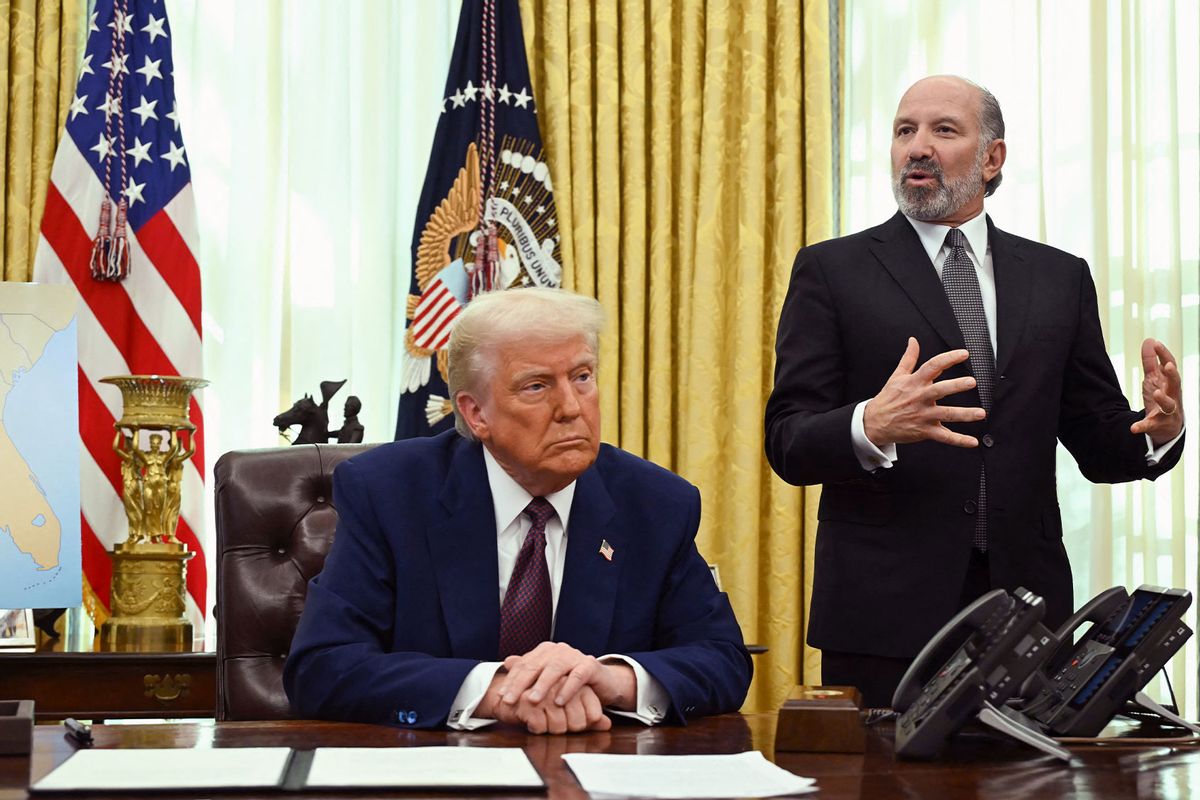President Donald Trump signed a presidential memorandum on Thursday tasking advisors with setting individual tariff rates for each country that exports goods to the United States.
Trump said that he's taking an eye-for-an-eye approach to international trade, saying the U.S. will now reciprocate tariffs on any country that imposes duties on American goods.
“I’ve decided for purposes of fairness that I will charge a reciprocal tariff,” Trump told reporters in the Oval Office. “They charge us a tax or tariff and we charge them the exact same.”
The president ran for office on a promise to make everyday goods more affordable for Americans. However, his tariffs are expected to drive costs up for U.S. consumers. The new taxes on imports could spike the sticker prices of a wide swath of goods.
“Prices could go up somewhat short term, but prices will also go down,” Trump claimed, adding that his tariffs would be a boon for American farmers.
Trump said that U.S. agriculture was getting the short end of the stick under the previous administration, telling reporters that “product is being dumped into our country and our farmers are getting hurt very bad.”
Commerce Secretary nominee Howard Lutnick and Jamieson Greer, Trump’s nominee for trade representative, were directed in the memo to advise Trump on setting unique tariff rates on a country-by-country basis. The move could create another period of economic uncertainty, similar to the president’s market-rattling plan for 25% tariffs on Mexico and Canada.
Trump temporarily paused plans last week for the 25% blanket import tariffs on the country's two biggest trading partners after his planned duties triggered a stock market dip. The pause is set to expire at the start of March. On Thursday, he lambasted Canada for "being very bad to us on trade" and once again floated the idea of annexing the country.
The president’s 10% tariff on China is already in effect, a fee his administration argues is a step towards closing trade imbalances and “unfair” treatment.
“For many years, the United States has been treated unfairly by trading partners, both friend and foe,” a White House official read from a memo on the plan, per Politico. “This lack of reciprocity is one source of our country’s large and persistent annual trade deficit in goods. Closed markets abroad reduce United States exports and open markets at home result in significant imports.”
Trump’s tariff scheme has faced scrutiny from economists and conservative news outlets, who say the plan could lead to higher costs and unnecessary trade wars with important economic partners. When asked if he would launch studies into the impact tariffs have on U.S. prices on Thursday, Trump told reporters that he wasn't concerned about price increases.
"There's nothing to study," he said."It's going to go well."



Shares